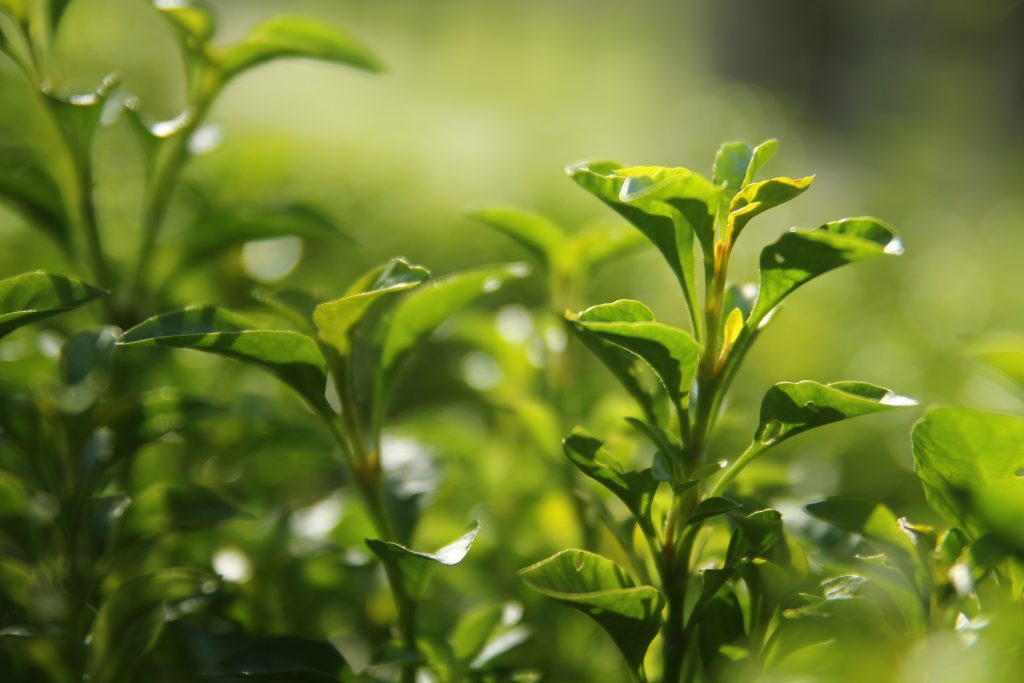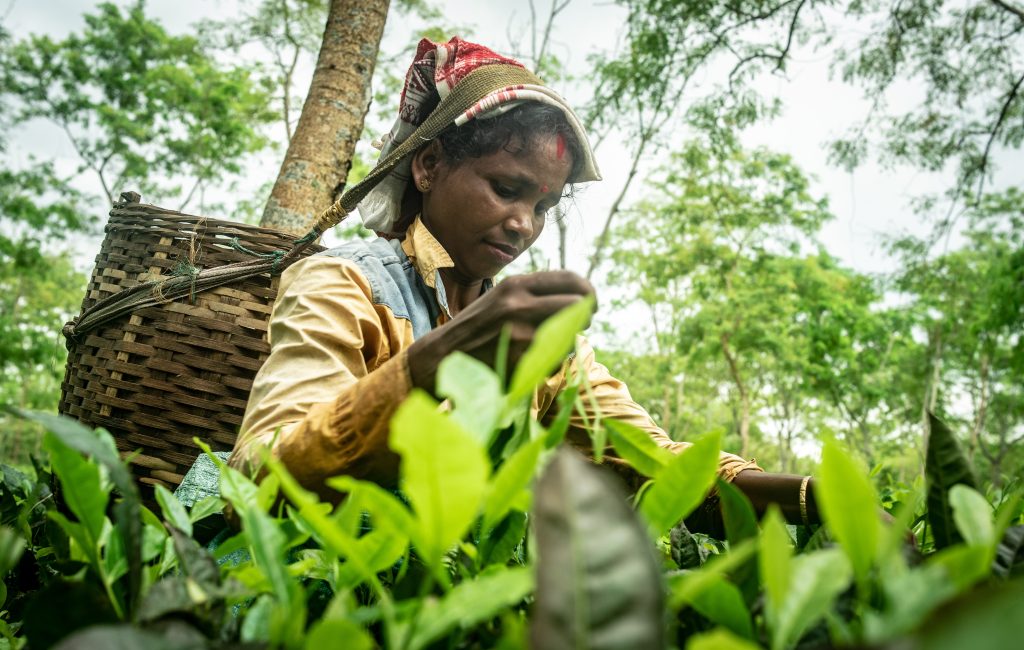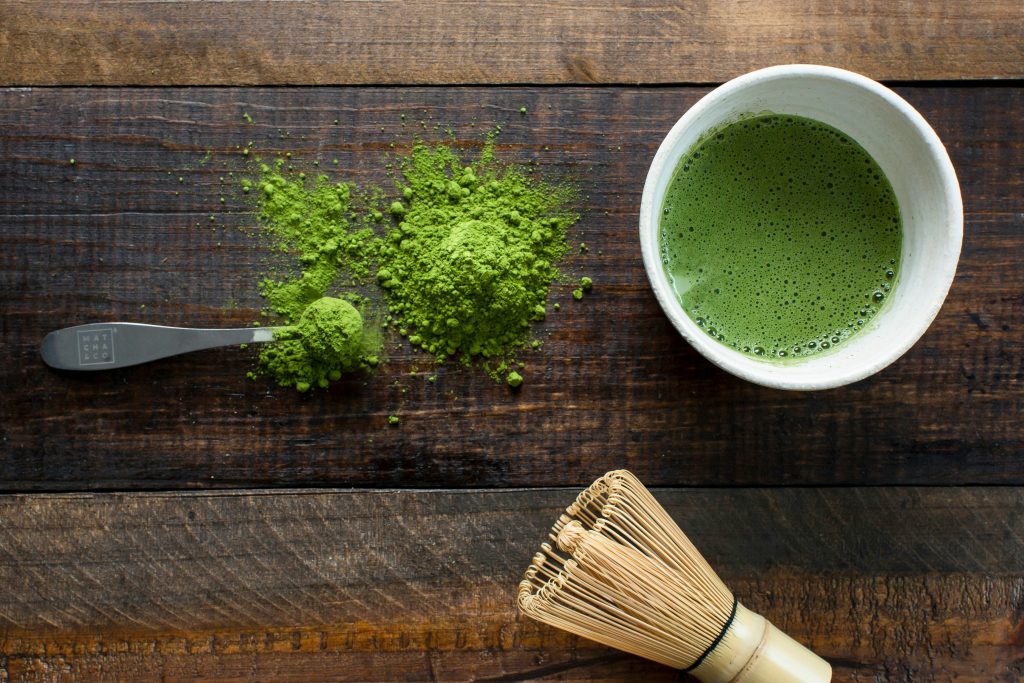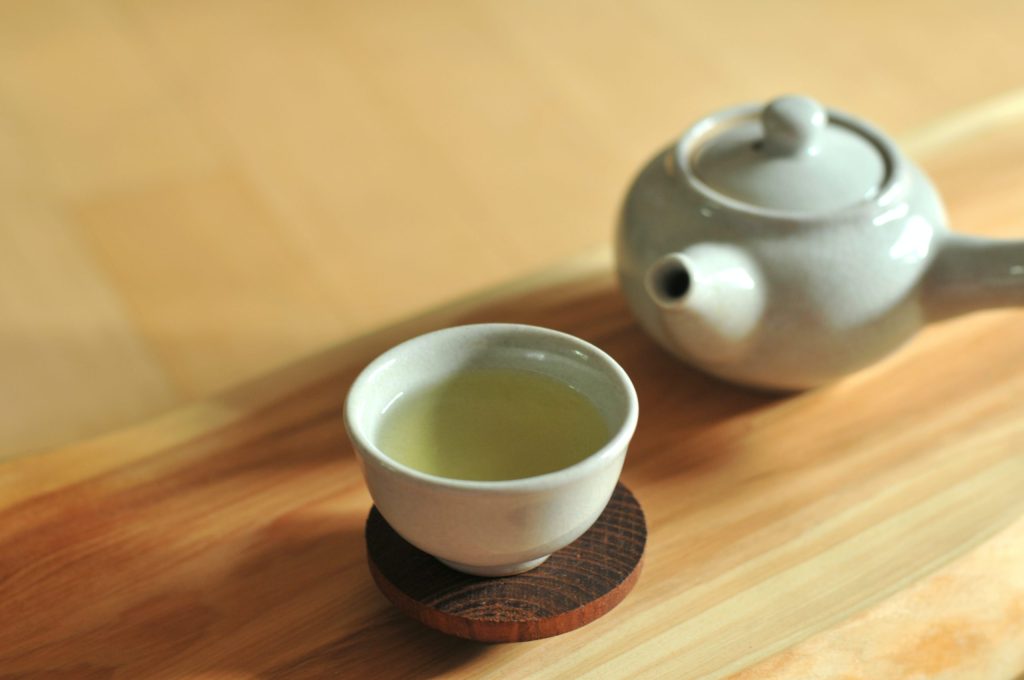WHAT IS GREEN TEA?
Did you know that green tea and black tea come from the same exact plant species—Camellia sinensis?
So how come they look and taste so different? The cultivar or variety of green tea plants and processed tea leaves define the look, taste, and smell of black tea becoming black tea and green tea becoming green.
A cup of brewed green tea is typically green, yellow or golden brown in colour. Green tea flavour profile can range from grass-like and toasted if pan-fried to umami, sweet or seaweed-like taste if steamed. If brewed correctly, most green tea should be pretty light in colour and only have a little sharper taste.
Varieties of Tea Plants
Despite tea plant cultivation spanning some 3000 years or so, there are still only two primary varieties of the tea plant, Camellia sinensis, that almost all modern teas are produced.
CAMELLIA SINENSIS SINENSIS:
This variety of tea plants is typically used to make green tea and white teas; it has smaller leaves native to China’s Guangxi province. Although it is now found elsewhere in sunny regions with cooler, drier climates. Camellia Sinensis Sinensis has a high tolerance for cold and often thrives in mountainous areas.
CAMELLIA SINENSIS ASSAMICA:
This is the variety of tea plants typically used to make strong black teas, such as Assam Tea; it has larger leaves native to the Assam area of North East India. Camellia Sinensis Assamica grows best in warm, moist climates of the Himilayas and can often be found in the sub-tropical forests of India, Sri Lanka and elsewhere.
Hundreds of hybrid cultivars have evolved over the centuries from these two primary plants that produce some great teas that we can sample today.
How is Green Tea Produced?

Similar to White Teas, Green teas go through a minimal production process. Green Tea leaves are handpicked and then dried using one of two methods. The pan-firing method is most common when producing Chinese green tea, where the leaves are heated over fires using large pans similar to woks.
Steaming is the other method used, which is more often associated with Japanese green tea. The length of the steaming process varies according to the particular tea master and directly affects the flavour and quality of the tea produced.
Steaming or pan-firing is used to stop the oxidation process in the leaves. Halting the oxidation as soon as possible after picking gives green tea its distinct bright green colour and light, earthy taste. Once dry, the tea leaves are pressed or rolled, often by hand, into their final shape and dried.
Where does Green Tea Come From?

While all true teas, including green tea, come from the same plant species, many green teas are grown and produced worldwide today, including China, Japan, India, Sri Lanka, Taiwan, Kenya, New Zealand, Hawaii, and even Canada.
Green tea originated in China’s Yunnan province. Yunnan is thought to be the original home of the Camellia sinensis plant species. Over 250 of the over 400 varieties of tea produced in the world can be found in Yunnan.
Legend has it that green tea was discovered by accident when Shennong, an Emperor of China and father of Chinese medicine, was sitting under a tea tree when some of the green leaves fell into his cup of hot water.
The earliest known reference to the use of green tea is found on a Chinese clay tablet from around 2000 BC, which mentions that it was used as an antidote for poison and has medicinal properties. Green Tea drinking became popular during the Tang Dynasty when Chinese emperors began using it as part of their daily routine. It was believed that consuming Green tea would help prevent illness, disease and have other health benefits.
Green tea became popular in Japan around 1200 when Buddhist priests visited China’s famous Buddhist monasteries and temples, returning with green tea plant seeds and young bushes. A young priest, called Eisai, is credited for much of this early popularisation. Eisai used his knowledge of growing and drinking tea in China to develop green tea as a meditation ritual within his own community of Buddhist monks, eventually spreading the custom of drinking green tea throughout Japan.
Green tea was first introduced to Europe by Arab traders during the Middle Ages. It became popular among Europeans after being brought back to Britain by East India Company merchants in the 1660s. During the 18th century, tea drinking spread throughout Britain and eventually across the world.
Types of green tea
As you will have noticed from your research that there are man many varieties of Green Tea, and if youve been in the shop recently or drinking green tea at home youll know that even though it all comes from the same plant variety, not all green tea tastes the same.
The taste of green tea depends not only on the processing methods but also on how its been cultivated. for example The time of year the green tea leaves and buds are plucked? How is the plant pruned? What parts of the plant are plucked? Are they organically grown plants, or are they plants treated with chemicals? How are green tea leaves heated to stop oxidation? How are the green tea leaves rolled, shaped and dried?
Some of the best green teas include varieties from Japan and China. Green Teas from Japan are sencha, gyokuro, genmaicha, and matcha, among the most popular, while Chinese green tea include Longjing and Gunpowder, which are among the most popular green tea.
The Green teas from these two countries have different flavour profiles based on where and how they are grown and processed— China tends to be pan-fired and Japan tends to be steamed green tea. Although many other countries produce green tea, they typically follow either the Chinese or Japanese production styles.
Chinese Green Teas—Pan Fired
The Chinese style of green tea is characterised by pan firing, where tea leaves are heated in a basket, pan or mechanised spinning drum to stop the oxidation of the leaves.
With Chinese green teas the leaves may be fired more than once during processing, depending on the style of green tea produced. These firings may take place in wicker baskets, steel wok-like pans, metal drums or other containers over charcoal, gas flame, electric heat or hot air, depending on the final flavour outcome desired.
The flavour can be radically different depending on the number and type of firings. Generally, Chinese pan-fired green tea has a yellowish-green or dark green colour and impart a grassy, earthy, roasted flavour.
Some popular pan-fired Chinese green teas include:
- Longjing green tea – This tea, sometimes known by its English Translation as “Dragon Well” tea, is grown Zhejiang province of China. Longjing is the most well-known pan-fired Chinese green tea. Its flavour derives partly from the environment of the region it is grown.
- Gunpowder green tea – This teas name comes from the shaping of tea leaves in production. Once dried, the tea leaves are rolled into tiny pellets that look like small bullets. This type of tea has a rich cultural history in China and was enjoyed by the rulers of the Tang Dynasty. Gunpowder green tea has a roasted flavour.
Japanese Green Teas—Steamed
The Japanese style of green tea is characterised by steaming, where tea leaves are briefly heated using steam shortly after eing handplucked to halt the oxidation process and bring out the rich green colour of both the tea leaves and the final brewed tea.
The steaming process creates a unique flavour profile that can be described as sweet, vegetal or seaweed-like. Some Japanese green tea may also be shade-grown during cultivation or roasted during processing to create additional flavour characteristics.
Some popular Japanese green teas include:
- Sencha tea – This tea is the most common style found today, representing 80% of all tea produced in Japan. 90% of sencha is grown from the Yabukita cultivar of the tea plant. It is savoury with a mild body and hints of pine and melon.
- Hojicha: Sencha is roasted over high heat to produce Hojicha, a tea with a roasted, nutty flavour. The application of high heat also helps reduce the tea’s caffeine content.
- Gyokuro – This tea is uniquely grown under shade for the last few weeks before harvest. This technique produces a sweeter flavour and a particularly dark green colour thanks to the higher amounts of chlorophyll in the leaves.
- Genmaicha – This tea is Sencha Tea brewed with toasted brown rice kernels. The rice lends the green tea its toasted flavour and a fuller body. The rice also helps to even out the slight bitterness that can be found in green teas.
- Matcha tea – This tea is possibly the most famous of the Japanese green teas. Like gyokuro, matcha is shaded before harvesting in a process called tencha. The leaves are then ground into a fine powder, which is matcha. Because the Matcha tea powder is very perishable, matcha is usually sold in small quantities and has a high price tag. Matcha is the type of tea used in Japanese tea ceremonies.
The caffeine content in green tea

The caffeine content of Green tea is generally lower per cup than other teas such as black tea and much less than Coffee. The volume of caffeine in green tea will vary between blends and brands; however, a cup of Green tea typically has between 11-25 mg of caffeine.
Other factors also affect the caffeine content, such as the brewing time – the longer green tea brews, the higher the caffeine content. In 2005 The Journal of Food Science looked at various brands of loose leaf tea and had a vast range of results using the same amount of tea leaves brewed for 3 minutes.
Caffeine Content Comparison for the Average Cup (225ml)
- Green Tea (loose leaf tea) 24 to 40 mg
- Black Tea (loose leaf tea) 14 to 61 mg
- Brewed Coffee 95 to 200 mg
If you want a low caffeine green tea as an alternative to your black tea or coffee, then make sure to read the packaging carefully or ask your tea supplier for information on the caffeine content of the specific tea you are buying.
How Does Green Tea Taste
The flavour of green tea can range from a grassy and earthy taste to a more flora and umami taste. Steamed green teas, such as those from Japan, tend to have more herby flavour. Pan-fired green teas from China generally have a nuttier and more earthy flavour, even slightly bitter taste.
How To Brew Green Tea
To brew great green tea, it’s essential to use the correct water temperature. Boiling water will scald the leaves and cause the tea to have a bitter taste. Instead, we recommend you use water at around 75°C or 167°F. Brew a teaspoon of green tea leaves for every 225ml of water for 3 to 5 minutes according to taste.
To find out a more detailed guide on how to brew your perfect Green tea, see our How To Brew Tea Properly page.
Benefits of Green Tea
There are a huge number of studies that have been done on the benefits of green tea, how drinking green tea, green tea consumption of the taking of green tea extract through green tea supplements can have many health benefits for humans and animals. We have linked some of those articles below and we would encourage you to look into the scientifically backed research on the health benefits of drinking green tea or green tea extracts or just drinking tea in general
However, we at Lets Infuse like to focus on the maybe not so scientific benefits of just getting to drink green tea, served by someone with a passion for the green tea in the company of fiends.
We hope this page has given you a better idea of what is green tea, and that you will enjoy drinking green tea and drinking tea in general.
If you have any questions would like to know more about drinking green tea. You can also see some of our green tea products here.

